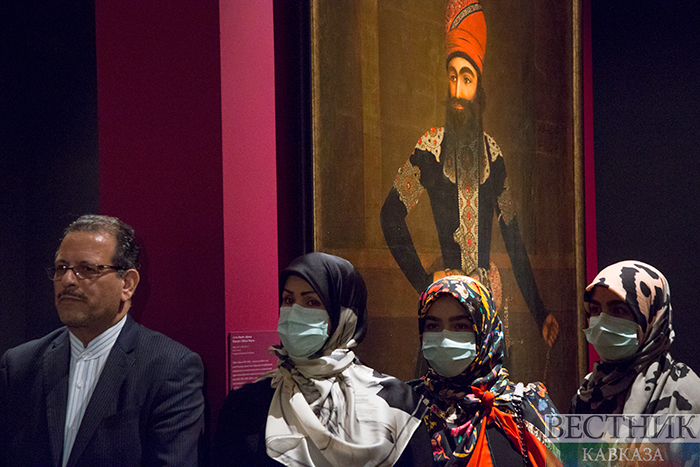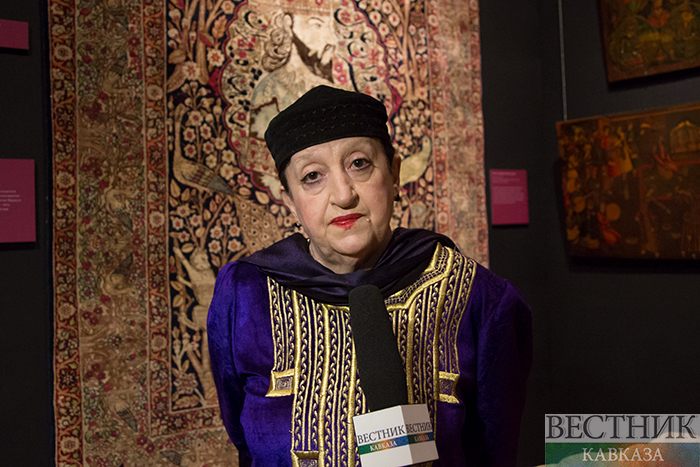Today, a new exhibition “Magnificence of Fall: Iran under the Qajar dynasty” has opened in the State Museum of Oriental Arts. The major exhibition project presents the Iranian history and art from the late 18th to the early 20th century to visitors. More than 300 items from the richest Iranian collection of the Oriental Museum are exhibited in one space for the first time ever in Russia: pictures and miniatures, majolica and glassworks, woodworks and metal artworks, carpets and painted fabric, manuscripts and weapons. The majority of the items are presented for the first time ever.
“Iranian painting of the Qajar epoch is unique. Our museum is lucky: there are more than thousand artworks of the Qajar Iranian epoch. Qualitatively and quantitively, it is one of the best collections not only in Russia but also in Europe,” Alexander Sedov, Director of the State Museum of Oriental Arts, said.

“I’m happy to see treasures of the museum today, as they reflect the great culture and civilization of our country. They are from the museum’s vaults but today visitors have an opportunity to see them,” Kazem Jalali, Ambassador of Iran to Russia, said.
Opening of the exhibition was timed to coincide with the Night of Museums, an annual all-Russian event.

“Those who will come to our museum will be able to see a very specific exhibition – so interesting, colorful, and inspiring it is. The exhibition is worth to visit all halls and look closely at the magnificent art of Iran under the Qajar dynasty, the Epoch of Fall,” Tatyana Metaxa, the Aide of the Director General of the Oriental Museum.

“Today it’s a very popular topic. Many museums of the world began to organize such exhibitions. Qajar Iran is an epoch which had been undeservedly forgotten for many years. The epoch lasted from the 18th century to 1925. Until recently, things that were made in the time were considered second-rate to the Iranian arts under the Safavid dynasty, for example, as they were too colorful, on the edge of kitsch. They haven’t been valued for a long time. However, now the time has come and we are proud to present our collection,” a curator of the exhibition Polina Korotchikova stated.

The exhibition is divided into a few thematic sections and studies various sides of lifestyle of the Iranian society in the period: domestic culture, religion, an attitude to foreigners, military traditions, as well as ideology of sovereign power.

A curator of the exhibition Maria Kullanda told about exhibition items: “The Qajar dynasty intentionally created a myth about itself. The presented items show how the Iranian shah and his inner circle wanted to look like; how they wanted foreigners and their own citizens see the Qajar dynasty. There are ceremonial portraits of shahs and their heirs in all their glory, in the main symbol of power – a crown, in magnificent gowns. That’s how they wanted to be seen by foreigners and their own citizens.”
The exhibition is on till July 25th.




























